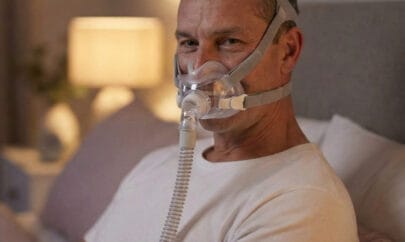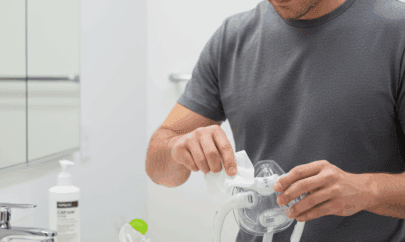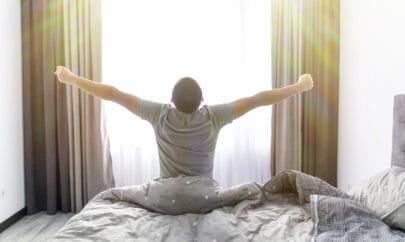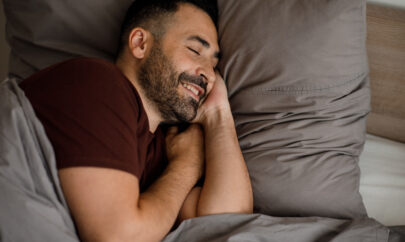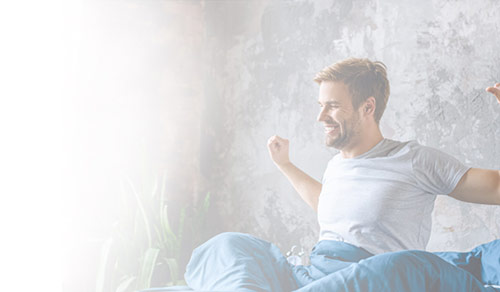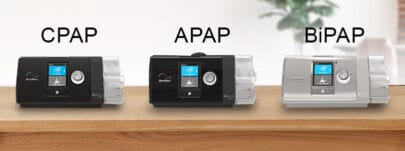
APAP vs BiPAP vs CPAP: Understanding the Differences Between Common Sleep Apnea Treatments
Sleep apnea is a disorder that results in pauses to your breathing while you sleep. The most common form of the disorder is obstructive sleep apnea, where breathing difficulties are caused by a narrowing of the upper airways. The brain responds to the drop in blood oxygen levels by prompting the body to wake for air.
Without treatment, sleep apnea can increase the risk of serious health issues such as heart disease, stroke, and diabetes. A non-invasive positive airway pressure (PAP) device is a leading sleep apnea treatment that may be recommended when diagnosed with sleep apnea.
However, there are different types of PAP devices, and understanding how each device works will help you receive the most appropriate treatment.
CPAP Therapy
Continuous positive airway pressure (CPAP) is one sleep apnea treatment. CPAP involves a device that delivers pressurized air via tubing to a mask worn over the nose or mouth while you sleep.
The air is pressurized to a level just high enough to prevent the upper airways from collapsing while you sleep. This in turn prevents the breathing cessations that cause the frequent night-time awakenings resulting from obstructive sleep apnea.
CPAP therapy delivers a continuous flow of pressurized air. Pressure within PAP devices is measured in centimeters of water column or cmH2O. A sleep test determines the setting for an individual which is then programmed into the CPAP device by a medical professional. CPAP devices can be set up to 20 cmH2O.
A continuous flow means the pressure setting of the air is the same when you inhale and exhale. CPAP therapy can take a bit of getting used to but has been shown to quickly produce results. However, exhaling against a high-pressure setting can be difficult, and one of the reasons why some people find other PAP devices more manageable.
APAP
Auto-adjustable positive airway pressure (APAP) devices will automatically adjust the pressure of the air delivered while you sleep. The air will still be delivered via tubing and a mask, as with CPAP therapy.
However, an APAP device monitors your breathing patterns overnight and adjusts the pressure of the air accordingly. The device operates within a range between 4 and 20 cmH20, adjusting to your pressure needs as you sleep.
Therefore, whereas CPAP delivers one set pressure through the night, APAP adjusts between a range of pressures depending on your breathing. The air you inhale and exhale with each breath is still a constant pressure, it is just that the pressure can be automatically adjusted breath by breath if required.
BiPAP
Whereas the PAP devices covered so far deliver a constant air pressure for both inhalation and exhalation, Bi-PAP is set to two different pressure settings. These are referred to as inhalation-positive airway pressure (IPAP) and exhalation-positive airway pressure (EPAP).
Sometimes called Bi-PAP machines, this type of PAP device still uses the same style of tubing and mask to deliver the pressurized air. However, the major difference is that the pressure setting for the exhaled air tends to be lower than that for the inhaled air. This can make treatment more manageable for those who struggle to exhale against the pressure setting of other PAP devices.
This type of device has a slightly higher upper range, as it can supply a pressure setting of 25 cmH20. This can make it a better choice for those with a more severe degree of obstructive sleep apnea.
Finding the Right Device for You
Once diagnosed with sleep apnea, your doctor will work with you to provide the most appropriate treatment plan. If a PAP device is recommended, they can help you receive the right one for you. Admittedly, you may not always get on with the first device prescribed.
However, compliance with your sleep apnea treatment is key to eliminating the symptoms of the disorder and reducing the risk of the serious health issues linked to it. Therefore, it is important to find the right device for you, one which you will use each time you sleep.
Who Might Use CPAP?
CPAP therapy can be prescribed to treat all severity of obstructive sleep apnea. It is the most studied of the PAP devices and therefore has plenty of research to back up its efficacy in reducing the symptoms of the sleep disorder.
This is the most common device prescribed. The equipment and the single pressure setting can take time to adjust to, but once it becomes part of the bedtime routine, most people find CPAP gives them much-needed sleep – and they no longer feel fatigued during the day.
Who Should I Use APAP?
APAP delivers constant air pressure but can amend the setting to accommodate any detected changes to breathing patterns. This can be a good option for those with allergies or who are prone to nasal congestion.
People who tend to sleep on their back or regularly change their sleeping position through the night can also benefit from the automatic adjustment provided by this device. Some will also find APAP is easier to adjust to compared to the steady, fixed pressure setting of CPAP.
Who Might Use BiPAP?
BiPAP could be ideal for anyone who struggles to exhale against a single pressure setting. A lighter exhalation setting can mean you are more likely to comply with the treatment plan. BiPAP can also be the better option for people with the less common central sleep apnea,
This is a device that can be beneficial for anyone with low oxygen levels and who require a higher pressure setting. This device can be set up to 25 cmH2O, yet has a lower exhalation pressure to make it more comfortable when breathing out. Those with chronic obstructive pulmonary disorder or congestive heart failure could also benefit from a BiPAP device.
PAP devices are a key sleep apnea treatment, helping you return to nights of uninterrupted sleep. In consultation with your doctor, you can understand the benefits of each device and determine which one is better suited for you.
Sources:
https://www.cpap.com/blog/difference-bipap-cpap/
https://www.healthline.com/health/apap-vs-cpap
https://www.sleepresolutions.com/blog/difference-between-apap-bipap-cpap-and-asv




